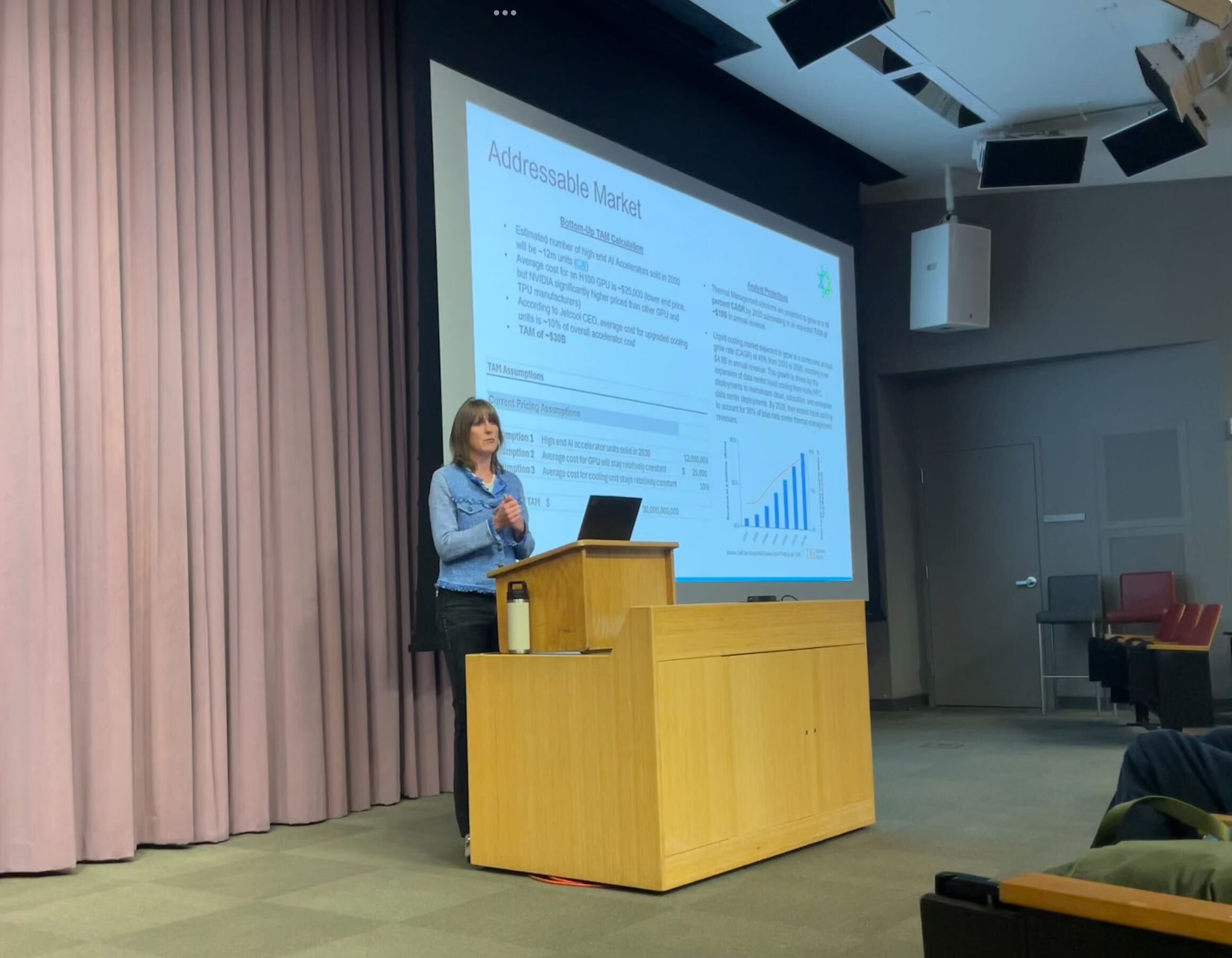Sustainable Innovation: Advancing High-Yield, Eco-Friendly Technologies – BIOENGINEER.ORG

Report on Sustainable Rice Cultivation Innovations in China
Introduction: Addressing Agricultural Challenges through Sustainable Development Goals
China’s rice production sector faces critical challenges that conflict with several Sustainable Development Goals (SDGs). Current agricultural practices, characterized by excessive fertilization and flood irrigation, undermine environmental sustainability. This report details innovative, green technologies developed by researchers at Nanjing Agricultural University to align rice cultivation with global sustainability targets.
- Challenge: Inefficient resource use, with China’s nitrogen fertilizer consumption at 37% of the global total for only 20% of the world’s rice cultivation area. This directly impacts SDG 12 (Responsible Consumption and Production).
- Challenge: Significant environmental degradation, including soil acidification, water pollution from nutrient leaching, and high greenhouse gas emissions. These issues contravene SDG 6 (Clean Water and Sanitation), SDG 13 (Climate Action), and SDG 15 (Life on Land).
- Objective: To develop and implement high-yield, eco-friendly technologies that ensure food security, as outlined in SDG 2 (Zero Hunger), while mitigating environmental harm.
Innovative Frameworks for Sustainable Rice Production
Researchers have proposed three technical frameworks designed to enhance resource efficiency and reduce the environmental footprint of rice farming. Each framework contributes directly to achieving specific SDGs.
-
Optimized Nutrient Management
This framework involves revising fertilization strategies to match crop needs more precisely, reducing waste and environmental impact.
- Method: A tailored approach reduces nitrogen application during seedling stages and increases it during panicle formation, promoting effective tillering and grain filling.
- SDG Contribution:
- SDG 12: Increases nitrogen use efficiency by up to 21.3%, promoting responsible resource management.
- SDG 2: Boosts crop yields, enhancing food security.
- SDG 6 & 15: Reduces nitrogen runoff, protecting water systems and terrestrial ecosystems from pollution.
-
Carbon-Nitrogen Synergy Technology
This method focuses on improving soil health by integrating organic matter and reducing reliance on chemical inputs.
- Method: Crushed straw is incorporated back into the soil, and a portion of chemical fertilizers is replaced with organic alternatives.
- SDG Contribution:
- SDG 15: Enhances soil organic carbon, improving soil structure, water retention, and microbial activity.
- SDG 13: Reduces ammonia volatilization losses by over 17% and contributes to soil carbon sequestration, aiding climate action.
- SDG 12: Promotes a circular economy approach by utilizing agricultural byproducts and reducing chemical dependency.
-
Integrated Water Management
This framework introduces water-saving irrigation techniques to address water scarcity and reduce greenhouse gas emissions.
- Method: The “alternate wetting and drying” irrigation strategy replaces traditional full-period flooding, improving soil aeration and root development.
- SDG Contribution:
- SDG 6: Achieves water savings of up to 19% compared to conventional methods, promoting sustainable water management.
- SDG 13: Reduces methane emissions by 16.2% by limiting anaerobic conditions in paddy fields.
- SDG 2: Maintains stable yields, ensuring that water conservation does not compromise food production.
Regional Application and Implementation Strategies
Tailored Regional Approaches
The technologies are adapted to specific regional conditions to maximize their effectiveness, demonstrating a commitment to context-specific sustainable production under SDG 12.
- Northeast China: Nitrogen-zinc synergistic fertilization is used to overcome challenges related to low spring temperatures.
- Southwest China: Sparse planting and deep application of organic matter are employed to manage terrain constraints.
- Northwest China: Film mulching and controlled-release fertilizers are combined to maximize water efficiency in arid conditions.
Facilitating Adoption through the “Science and Technology Courtyard” Model
To ensure widespread implementation, a model has been developed to translate complex scientific principles into practical, actionable standards for farmers. This initiative fosters collaboration between researchers and agricultural communities, directly supporting SDG 17 (Partnerships for the Goals) and accelerating the transition to sustainable practices.
Conclusion: Aligning Agricultural Productivity with Global Sustainability Targets
The integrated application of these green, high-yield technologies presents a viable pathway for transforming China’s rice cultivation sector. Early demonstrations have already resulted in yield increases ranging from 6.3% to 15.7%. The project’s success offers a scalable model for achieving multiple Sustainable Development Goals simultaneously.
- SDG 2 (Zero Hunger): Addressed by significantly increasing crop yields and bolstering food security.
- SDG 6 (Clean Water and Sanitation): Supported through major reductions in water consumption and prevention of fertilizer pollution.
- SDG 12 (Responsible Consumption and Production): Advanced by dramatically improving the efficiency of nitrogen and water resources.
- SDG 13 (Climate Action): Contributed to by curtailing methane and other greenhouse gas emissions from paddy fields.
- SDG 15 (Life on Land): Promoted by enhancing soil health, reducing soil degradation, and protecting ecosystems from agricultural runoff.
This research demonstrates that food security and environmental protection are not mutually exclusive. By integrating sustainable practices into agricultural production, it is possible to meet the needs of a growing population while preserving planetary health, offering a paradigm for global food systems.
Analysis of Sustainable Development Goals in the Article
1. Which SDGs are addressed or connected to the issues highlighted in the article?
-
SDG 2: Zero Hunger
The article directly addresses SDG 2 by focusing on increasing the productivity and sustainability of rice cultivation, a staple food for a large portion of the world’s population. It discusses methods to achieve “high-yielding” rice crops to ensure food security, which is the primary goal of SDG 2.
-
SDG 6: Clean Water and Sanitation
This goal is relevant as the article highlights the negative impact of current agricultural practices on water quality, such as “water pollution” and the “leaching of nutrients into water systems” due to excessive fertilization. It also proposes solutions like “water-saving and controlled drainage” techniques to manage water resources more effectively.
-
SDG 12: Responsible Consumption and Production
The article connects to SDG 12 by critiquing the “high input and low efficiency” model of rice production. It advocates for more sustainable production patterns by promoting the efficient use of resources, such as reducing nitrogen fertilizer consumption and improving “nitrogen use efficiency.”
-
SDG 13: Climate Action
SDG 13 is a central theme, as the article explicitly mentions that China’s paddy fields are a “significant source of greenhouse gases.” The proposed innovative techniques, such as “alternate wetting and drying” irrigation, are designed to curtail “methane emissions,” directly contributing to climate change mitigation.
-
SDG 15: Life on Land
The article addresses SDG 15 by discussing the problem of “soil degradation” and “soil acidification” caused by conventional farming. The proposed solutions, like the “carbon-nitrogen synergy” technology, aim to restore soil health by enhancing “soil organic carbon levels” and promoting the activity of beneficial soil microorganisms.
2. What specific targets under those SDGs can be identified based on the article’s content?
-
Target 2.4: By 2030, ensure sustainable food production systems and implement resilient agricultural practices that increase productivity and production.
The entire article is centered on this target. It details “innovative and green” approaches to rice cultivation that are both “high-yielding and environmentally sustainable.” The development of technologies that increase yields while reducing environmental impact directly supports the implementation of resilient and sustainable agricultural practices.
-
Target 6.3: By 2030, improve water quality by reducing pollution, eliminating dumping and minimizing release of hazardous chemicals and materials.
The article identifies the problem of water pollution from agricultural runoff due to excessive fertilizer use. The proposed “optimization of nutrient management strategies” aims to reduce the amount of nitrogen applied, thereby minimizing the “leaching of nutrients into water systems” and improving water quality.
-
Target 12.2: By 2030, achieve the sustainable management and efficient use of natural resources.
This target is addressed through the focus on improving resource efficiency. The article notes that China’s nitrogen fertilizer consumption is disproportionately high, and its “residual nitrogen use efficiency” is low. The new methods aim to “elevate nitrogen use efficiency by as much as 21.3%,” representing a more sustainable and efficient use of natural resources.
-
Target 13.2: Integrate climate change measures into national policies, strategies and planning.
The research and proposed technological frameworks for rice cultivation represent a strategy to mitigate climate change within the agricultural sector. By developing and promoting techniques that reduce greenhouse gas emissions from paddy fields, the article provides a scientific basis for integrating these measures into agricultural planning and policy.
-
Target 15.3: By 2030, combat desertification, restore degraded land and soil, including land affected by desertification, drought and floods, and strive to achieve a land degradation-neutral world.
The article directly addresses this target by proposing solutions to “soil degradation.” The “carbon-nitrogen synergy” technology, which involves incorporating crushed straw into the soil, is designed to enhance “soil organic carbon levels,” thereby improving soil health and restoring degraded agricultural land.
3. Are there any indicators mentioned or implied in the article that can be used to measure progress towards the identified targets?
-
Indicators for SDG 2 (Target 2.4):
The article provides a direct indicator of agricultural productivity: crop yield increase. It states that demonstrations of the new methods have resulted in “yield increases ranging from 6.3% to an impressive 15.7%.”
-
Indicators for SDG 6 (Target 6.3):
An implied indicator for reduced water pollution is the reduction in nutrient loss. The article mentions that the carbon-nitrogen synergy approach can “curtail ammonia volatilization losses by more than 17%,” which serves as a measurable indicator of reduced nutrient pollution. Additionally, the article mentions a 19% saving in water usage with new irrigation methods, which relates to water resource management.
-
Indicators for SDG 12 (Target 12.2):
A key indicator for resource efficiency is explicitly stated: Nitrogen Use Efficiency (NUE). The article quantifies the potential improvement, stating that the refined fertilization method can “elevate nitrogen use efficiency by as much as 21.3%.”
-
Indicators for SDG 13 (Target 13.2):
The article provides a specific indicator for climate action: reduction in greenhouse gas emissions. The “alternate wetting and drying” irrigation technique is shown to reduce “methane emissions by 16.2%.”
-
Indicators for SDG 15 (Target 15.3):
An indicator for soil health improvement is the level of soil organic carbon. The article mentions that the “carbon-nitrogen synergy” technology leads to a “significant enhancement of soil organic carbon levels,” which can be measured to track progress in restoring degraded soil.
4. Create a table with three columns titled ‘SDGs, Targets and Indicators” to present the findings from analyzing the article.
| SDGs | Targets | Indicators |
|---|---|---|
| SDG 2: Zero Hunger | 2.4: Ensure sustainable food production systems and implement resilient agricultural practices that increase productivity. | Increase in crop yield (6.3% to 15.7%). |
| SDG 6: Clean Water and Sanitation | 6.3: Improve water quality by reducing pollution. | Reduction in ammonia volatilization losses (by more than 17%); Reduction in water usage (by up to 19%). |
| SDG 12: Responsible Consumption and Production | 12.2: Achieve the sustainable management and efficient use of natural resources. | Increase in nitrogen use efficiency (by as much as 21.3%). |
| SDG 13: Climate Action | 13.2: Integrate climate change measures into national policies, strategies and planning. | Reduction in methane emissions (by 16.2%). |
| SDG 15: Life on Land | 15.3: Combat desertification, restore degraded land and soil. | Enhancement of soil organic carbon levels. |
Source: bioengineer.org

What is Your Reaction?
 Like
0
Like
0
 Dislike
0
Dislike
0
 Love
0
Love
0
 Funny
0
Funny
0
 Angry
0
Angry
0
 Sad
0
Sad
0
 Wow
0
Wow
0

















































:focal(1500,1000)/https://media.globalcitizen.org/a6/9a/a69a4720-d8a1-4715-b596-18738d03c05c/rotary_polio_hero_image.jpg?#)






/countries/sri-lanka/photo-credit---dmc-sri-lanka.tmb-1200v.jpg?sfvrsn=dc298bcc_1#)

















